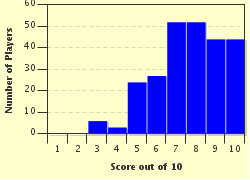Quiz Answer Key and Fun Facts
1. One way to brighten up your borders in winter is to plant them up with which multi-coloured hybridised bedding plants of the genus Viola?
2. Flowering in February and March in England, which of these bulbs of the genus Galanthus has beautiful white flowers and is extremely hardy?
3. Which ornamental shrub with medicinal properties has spindly flowers in yellow, orange or red and a spicy aroma?
4. Which genus of evergreen shrub provides a splash of colour in winter with its commonly white or pink flowers, dark red berries and deep-green leaves?
5. Erica carnea, Erica Erigena and Erica x darleyensis are three examples of winter-flowering species of which type of low-growing shrub?
6. Which of these grows from a tuber and is particularly good at providing a wintry splash of colour around the base of any trees in your garden?
7. Helleborus niger is a perennial plant that produces predominantly white flowers from mid-winter to spring each year. Commonly known as the "Christmas rose", what family does it actually belong to?
8. Although it loses all its leaves and flowers before the winter period, Cornus sericea can still brighten up a winter garden as it has striking red bark. Of what type of woody plant is it a commonly cultivated species?
9. A popular cottage garden plant that blooms in late winter and early spring, which of these most commonly has yellow, scented flowers and does not belong to the rose family?
10. A common ornamental tree probably best suited to larger gardens, which of these is also cultivated for the Christmas tree industry and would suit some extra bright and colourful decorations each December?
Source: Author
Fifiona81
This quiz was reviewed by FunTrivia editor
Bruyere before going online.
Any errors found in FunTrivia content are routinely corrected through our feedback system.


